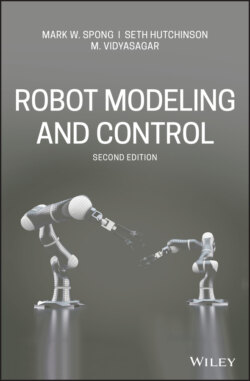Читать книгу Robot Modeling and Control - Mark W. Spong - Страница 20
Method of Control
ОглавлениеRobots are classified by control method into servo and nonservo robots. The earliest robots were nonservo robots. These robots are essentially open-loop devices whose movements are limited to predetermined mechanical stops, and they are useful primarily for materials transfer. In fact, according to the definition given above, fixed stop robots hardly qualify as robots. Servo robots use closed-loop computer control to determine their motion and are thus capable of being truly multifunctional, reprogrammable devices.
Servo controlled robots are further classified according to the method that the controller uses to guide the end effector. The simplest type of robot in this class is the point-to-point robot. A point-to-point robot can be taught a discrete set of points but there is no control of the path of the end effector in between taught points. Such robots are usually taught a series of points with a teach pendant. The points are then stored and played back. Point-to-point robots are limited in their range of applications. With continuous path robots, on the other hand, the entire path of the end effector can be controlled. For example, the robot end effector can be taught to follow a straight line between two points or even to follow a contour such as a welding seam. In addition, the velocity and/or acceleration of the end effector can often be controlled. These are the most advanced robots and require the most sophisticated computer controllers and software development.
